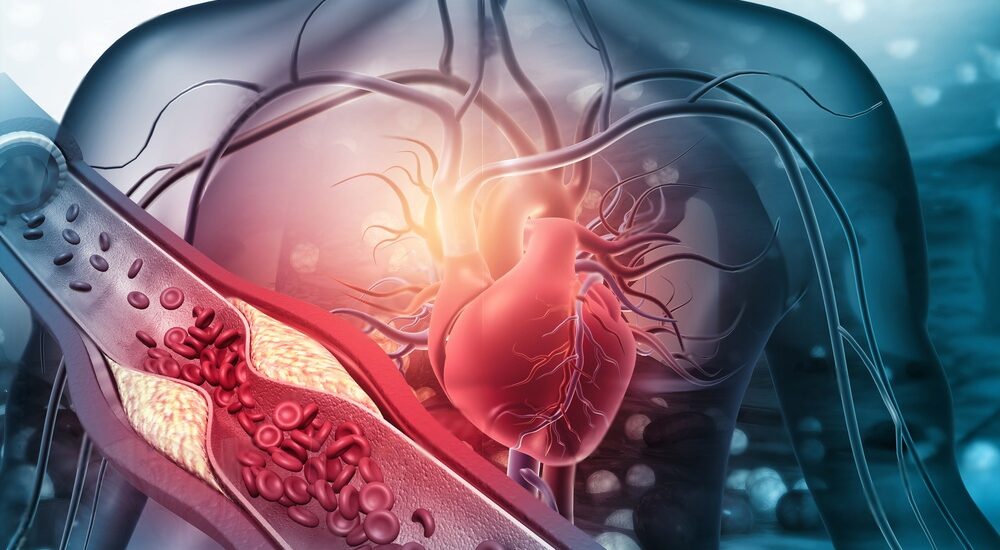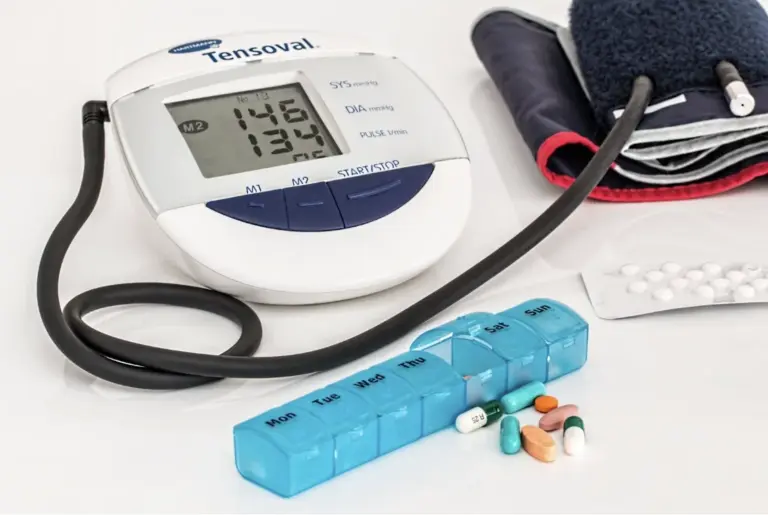Are you familiar with the term atherosclerosis or arteriosclerosis? If not, then this is the right place for you to gain a deeper understanding of both the terms atherosclerosis and arteriosclerosis.
Welcome to our in-depth article on atherosclerosis, a medical condition that falls under the umbrella term arteriosclerosis. Atherosclerosis and arteriosclerosis are related to medical conditions, but they are not exactly the same thing. However, these terms are used interchangeably.
Arteriosclerosis is a general term that refers to the thickening and hardening of the arteries, while atherosclerosis occurs when plaque builds up inside the arteries, causing them to narrow and restrict blood flow to vital organs. Atherosclerosis can be considered a more severe and specific form of arteriosclerosis. It’s important to note that both conditions can lead to serious health problems, including heart disease and stroke.
In this comprehensive article, we will explore the definition and meaning of arteriosclerosis, and answer the question “What is arteriosclerosis?” and “What is atherosclerosis?”. We will discuss the causes, symptoms, risk factors, and treatment options for atherosclerosis, and provide you with practical tips to manage and prevent this condition. With heart disease being one of the leading causes of death globally, understanding arteriosclerosis is crucial to maintaining a healthy heart and reducing your risk of cardiovascular disease. So, let’s dive deeper into the world of arteriosclerosis and uncover the keys to a healthy heart.
What Is Atherosclerosis?
To learn more about atherosclerosis’s meaning, you also need to understand arteriosclerosis’s meaning to be able to know its subtle differences and connections.
Arteriosclerosis Definition:
Arteriosclerosis is a medical condition characterised by the hardening and thickening of the arterial walls. This leads to serious health problems such as heart disease and stroke. Arteriosclerosis is a broad term that includes several subtypes, including atherosclerosis, which is a specific type of arteriosclerosis characterised by the buildup of fatty plaques within the arterial walls.
Arteriosclerosis is typically caused by a combination of genetic and lifestyle factors, including high blood pressure, high cholesterol, smoking, and physical inactivity. The prevention and management of arteriosclerosis typically involve lifestyle changes such as regular exercise, a healthy diet, and smoking cessation, as well as medical treatments such as medications and procedures to manage the symptoms and complications of the condition.
Atherosclerosis Definition:
Atherosclerosis is a complex and progressive disease that can affect the entire arterial system of the body. It typically begins with the buildup of fatty streaks within the inner lining of the artery walls, which are composed of lipids, white blood cells, and cellular debris. Over time, these fatty streaks can develop into plaques, which are characterised by a fibrous cap and a core of lipids and cellular debris.
As the plaques grow larger, they can protrude into the lumen of the artery, reducing blood flow and causing the affected tissues to become starved of oxygen and nutrients. This can lead to a wide range of serious health complications, including angina (chest pain), heart attack, stroke, and peripheral artery disease (PAD).
There are several risk factors that can contribute to the development of atherosclerosis, including high blood pressure, high cholesterol, diabetes, smoking, and a family history of heart disease. Additionally, lifestyle factors such as poor diet, physical inactivity, and stress can also increase the risk of developing atherosclerosis.
Causes of Atherosclerosis
The exact cause of atherosclerosis is not known, but certain factors can increase the risk of developing the condition. These include:
- High blood pressure: High blood pressure can damage the inner lining of the arteries, making them more susceptible to the accumulation of fatty deposits.
- High cholesterol levels: High levels of LDL cholesterol, also known as “bad” cholesterol, can lead to the buildup of fatty deposits in the arteries.
- Smoking: Smoking damages the arteries and contributes to the accumulation of fatty deposits.
- Diabetes: People with diabetes have a higher risk of developing atherosclerosis due to high blood sugar levels.
- Obesity: Excess body weight can increase the risk of developing atherosclerosis, especially when combined with other risk factors such as high cholesterol and high blood pressure.
Symptoms of Atherosclerosis
Atherosclerosis does not usually cause symptoms until the affected arteries become significantly narrowed or completely blocked. Some of the symptoms that may occur in advanced stages of atherosclerosis include:
- Chest pain or discomfort (angina)
- Shortness of breath
- Fatigue
- Numbness or weakness in the legs
- Pain or cramping in the legs during physical activity (intermittent claudication)
- High blood pressure
- Erectile dysfunction
Treatment of Arteriosclerosis
The treatment of atherosclerosis and arteriosclerosis involves similar strategies as both conditions involve the buildup of plaque within the arteries. The following are some of the common treatments that may be used to manage both conditions:
- Lifestyle Changes: Adopting healthy habits such as eating a balanced diet, regular exercise, quitting smoking, and managing stress are subtle lifestyle changes to fight high BP, which triggers complications. Lifestyle changes can help slow down the progression of the disease and reduce the risk of complications.
- Medications: Several medications may be prescribed to manage atherosclerosis and arteriosclerosis, such as statins to lower cholesterol levels, antiplatelet agents to prevent blood clots, and blood pressure medications to lower high blood pressure.
- Procedures: In some cases, medical procedures may be recommended to remove plaque buildup and restore blood flow in the arteries. Examples include angioplasty, stenting, and bypass surgery.
- Monitoring and Management of Underlying Conditions: Managing underlying health conditions such as high blood pressure, high cholesterol, and diabetes is also essential in preventing the progression of atherosclerosis and arteriosclerosis.
Note: Though the treatments for both conditions are similar, the specific treatment plan may vary depending on the severity of the condition, the location of the affected artery, and the individual’s overall health.
Conclusion
Atherosclerosis is a chronic disease that affects the arteries of the body, causing a range of serious health complications. While the condition is complex and progressive, it can be prevented and managed through lifestyle changes and medical treatments.
A healthy diet, quitting smoking and regular exercise to control high blood pressure are a few important lifestyle changes that can reduce the risk of developing atherosclerosis. Additionally, medications such as hypertension drugs can help control blood pressure and prevent further damage to the arteries. If you are concerned about your risk of developing atherosclerosis, it’s important to consult with a qualified physician.
Visit our “Find a Physician” webpage to locate a specialist who can help you manage your blood pressure and reduce your risk of developing complications from atherosclerosis.
FAQs on Atherosclerosis/Arteriosclerosis
1) What are the differences between atherosclerosis and arteriosclerosis?
Atherosclerosis is a specific type of arteriosclerosis. Arteriosclerosis is a general term that refers to the thickening and hardening of arteries, while atherosclerosis specifically involves the buildup of plaque within the arterial walls. Atherosclerosis can lead to blockages in the arteries, which can increase the risk of heart attack, stroke, and other complications. Arteriosclerosis can also cause decreased blood flow to organs and tissues, leading to a range of health problems.
2) What happens when you have arteriosclerosis?
When you have arteriosclerosis, your arteries become stiff and less elastic, which can lead to high blood pressure and decreased blood flow to organs and tissues. This can increase your risk of heart attack, stroke, kidney damage, and other complications.
3) Can arteriosclerosis be cured?
Arteriosclerosis is a chronic condition that cannot be cured. However, lifestyle changes such as quitting smoking, eating a healthy diet, exercising regularly, and managing stress can help slow the progression of the disease and reduce your risk of complications.
4) Can I live a long life with atherosclerosis?
Yes, it is possible to live a long life with atherosclerosis, especially if the condition is detected early and managed appropriately. Lifestyle changes and medications can help slow the progression of the disease and reduce the risk of complications.
5) What are the 4 stages of atherosclerosis?
Stage 1: Fatty streaks – a buildup of cholesterol and other substances within the arterial walls
Stage 2: Fibrous plaque – a buildup of plaque with an overlying cap of smooth muscle cells and connective tissue
Stage 3: Complicated plaque – plaque that has ruptured, leading to the formation of blood clots and further narrowing of the artery
Stage 4: Calcification – the buildup of calcium within the plaque, which can make it harder and more brittle.
Disclaimer
The information contained in this article is to educate, spread awareness in relation to hypertension and other diseases to the public at large. The contents of this article are created and developed by BPinControl.in through its authors, which has necessary, authorisations, license, approvals, permits etc to allow usage of this articles on The Website. The views and opinions expressed in this article are views, opinions of the respective authors and are independently endorsed by doctors. Although great care has been taken in compiling and checking the information in this article, The Website shall not be responsible, or in any way liable for any errors, omissions or inaccuracies in this article whether arising from negligence or otherwise, or for any consequences arising therefrom. The content of this article is not a substitute for any medical advice. The Website shall not be held responsible or liable for any consequence arising out of reliance on the information provided in the article.




